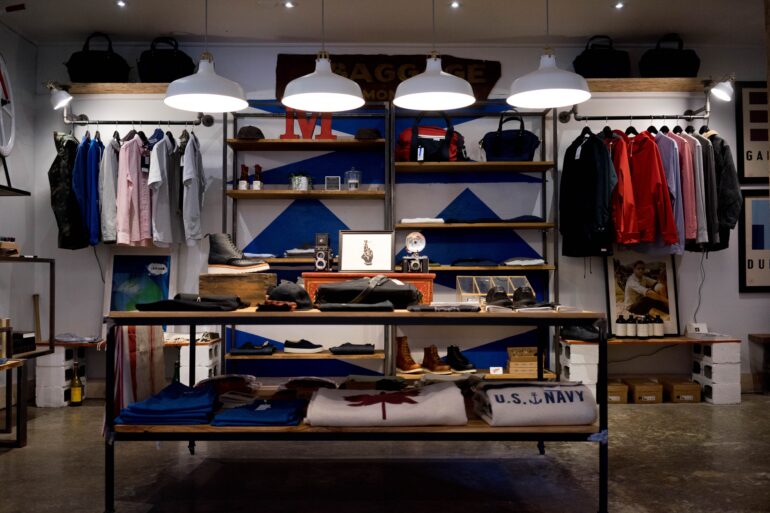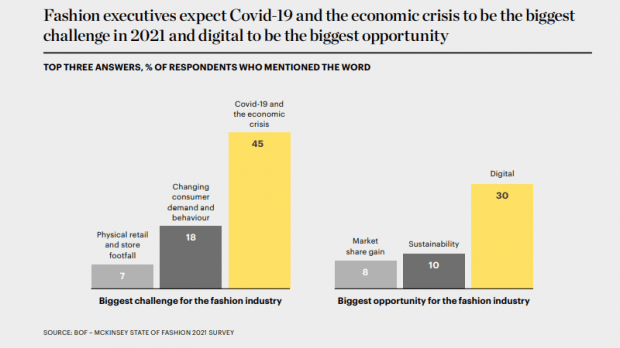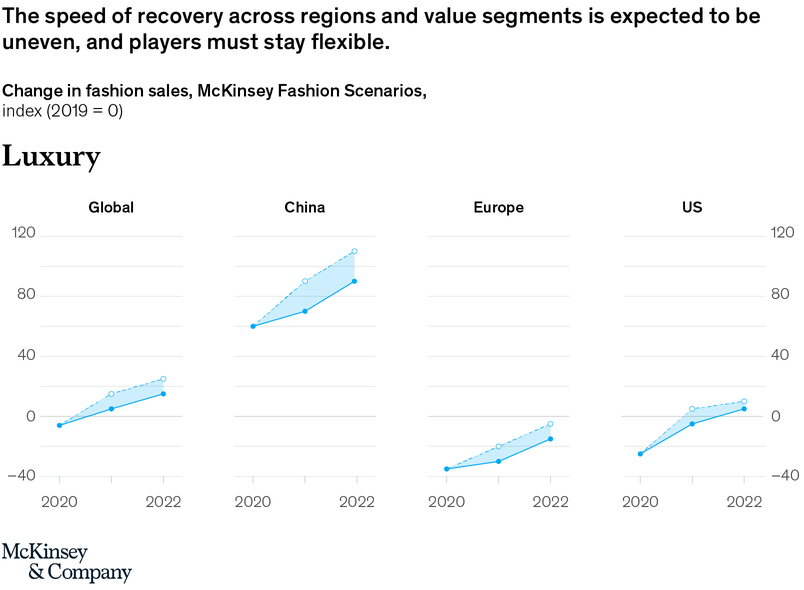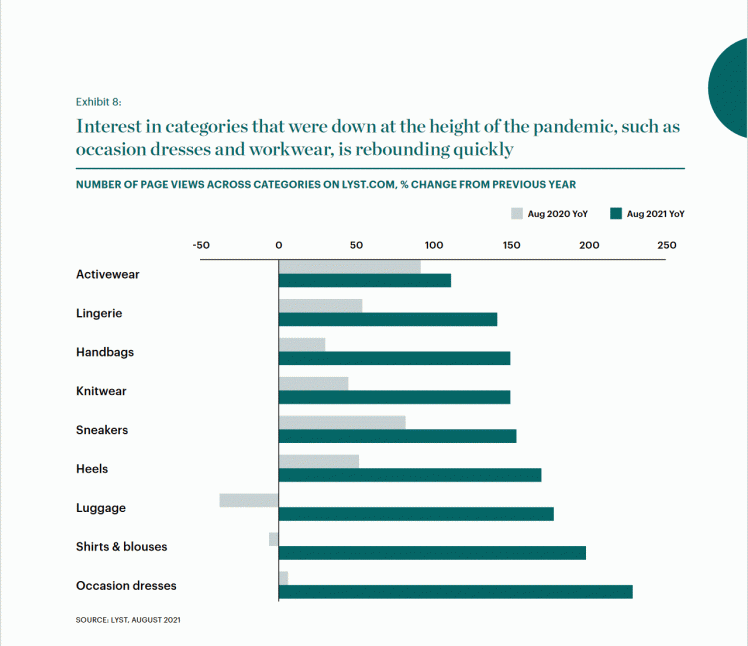
After nearly two years of disruption, the global fashion industry is once again finding its feet. Companies are adapting to new consumer priorities, and digital is providing a nexus for growth. In 2022, the fashion industry can again grow as the category landscape changes, new realms, and in development continue to present opportunities. So, this 10 trends that will shape the fashion industry :
- Uneven Recovery
Countries with strong and resilient economic systems will tend to recover from the pressures caused by Covid-19. While China has reached pre-pandemic sales levels, the United States is behind. However, Europe is progressing at a slower pace as a result of supply chain pressures.
Recovery from COVID-19-related economic shocks will not be evenly distributed across consumer markets and source regions, as countries with strong healthcare with strong healthcare systems and economic resilience will outperform. In an uneven environment, fashion players with an international footprint need to look at investment decisions properly, assess local conditions regularly to reduce market-specific risks.
2. Congestion Logistics
The fashion industry was once tied to a complex network of global supply chains that faced unprecedented stress and disruption. With logistics bottlenecks, increased shipping costs, and shortages of many add new types, companies must have a sourcing strategy while implementing the latest supply chain management, and increase greater flexibility to keep products flowing with customer demand in the next year.
3. Domestic Luxury
Luxury shopping traditionally with tourism. The decline in international travel and its recovery for 2023 means that the luxury goods market must focus on national consumers, balance its retail on a global level and invest in local channels that allow it to have a wider reach.
With the dynamic shift between travel and luxury shopping, high-end brands need new strategies to engage near and long-term buyers, meaning reconsideration in product development, marketing and commercialization.
4. Wardrobe Robot
The rise of social life, sports trends after almost two years has become a consumer favorite category. Customer investment will be split between items with higher economic ratings, as well as small impulse purchases that will continue to trend the market for 2022. Collaboration with suppliers to carefully manage orders and inventory will be essential.
5. Metaverse Mindset
The average online uptime per consumer has increased. It is estimated that by 2020, Gen Z will average eight hours a day in front of screens. This, along with the emergence of digital environments such as the metaverse, makes virtual goods a tool with great potential for the fashion industry.
Going forward, NFT will be more and more popular as fashion brands find new ways to find creative adventures. Certainly this trend will open up new ways to interact with the aim of capturing untapped value streams, such as new digital currencies, games and virtual fads.
6. Social Shopping
With stores closing, the use of social media to find and buy momentum during the second quarter of 2020. 74% of consumers say their purchases are influenced more by social networks than before the pandemic.
As currently the social media giant is developing a lot of in-app shopping experiences. Instagram launched its store app in 2020 and has since supported purchasing products from or through to the brand’s website. Meanwhile, TikTok has been expanding its partnerships by testing hands-on with select brands.
7. Fresh Textiles
One of the most important levers of change in the fashion industry to reduce environmental impact is closed-loop recycling. A system that starts on a large scale and also promises to limit the extraction of pure raw materials and implement waste fashion. Facts of particular relevance to the imminent entry into force of the waste laws in Spain.
Due to the increasing popularity in industrial fashion, companies need to integrate it into the product design phase while adopting a large-scale collection and sorting system. The spread of industrial processes will lower prices over the next few years and increase the demand for garments made from these materials. If industry is to significantly reduce the level of environmental damage, fashion also needs to eliminate toxic chemicals, decarbonize supply chains, and reduce emissions.
8. Product Passport
To promote authenticity, transparency and sustainability, fashion brands invest in technology that enables the addition of compelling information to products. This product passport consists of a combination of blockchain technology, supported by radio frequency identifier (RFID), QR code, or short range communication (NFC). Completing standards that support full supply chain traceability is critical to protecting industry transparency.
9. Cyberspace Resilience
As business digitization reaches new dimensions, brands face increased threats from cyberattacks and the potential risks associated with improper data handling. Information is a strategic asset and a source of financial, reputation, and operational risk. To meet customer expectations and comply with regulations, brands must set clear standards for data collection, use and storage.
On the other hand, companies need to test their cyber resilience, prepare employees for potential breaches, and set up cyberattack simulations to test their response protocols in real time and invest more to make digital security a strategic imperative.
10. Talent Crunch
Over the next year, the progress of the fashion industry in terms of diversity, equality and inclusion, as well as sustainability, will continue to be a focus.
Listening to and responding to these changes will be critical for brands looking to attract a new generation of talent, as well as ensure their relevance in the marketplace. Companies must update their talent recruitment and retention strategies to build an increasingly flexible, diverse and digital workplace that represents the priorities of all their employees, from top management to frontline retail workers.
So, the main conclusion from The State of Fashion 2022 report is that the textile sector faces a complex combination of challenges and opportunities in the coming year. Experience in 2020 and 2021 shows that fashion is an industry that has the potential to adapt to changing circumstances. The predictions demonstrate the importance of meeting these challenges through digital and sustainable transformation. Our need to the future and seek to increase the flexibility of brands looking to make sustainability an important tool for projecting their development in the fashion industry. So, let’s together build a responsible for the long term.



